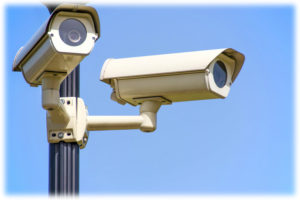
Hi, I’m John Lange, an electrician for the North Carolina Department of Transportation. I am responsible for maintaining three of the state’s most critical drawbridges—or at least I was when I wrote this. Who knows what future-me is up to now?
Over the last decade, every drawbridge under my responsibility has seen the implementation of a video monitoring system. Some bridges required only a few cameras in key areas while others now employ more than a dozen camera views for several different purposes. Even a bridge that has very clear sight lines can see an improvement in the operator’s ability to safely perform their duties by installing cameras properly.
Just ask a bridge operator, “Have you ever had difficulty in judging whether a vehicle is clear of your traffic gate?” I have never had an operator answer that question with a resounding “No”. Even on bridges with great sight lines, when a vehicle approaches too close to a traffic gate the operator must judge whether that vehicle is clear before lowering that gate. By properly locating and installing a camera that gives a closer view of that particular area, bridge operators are better equipped to make the correct judgment call.
Sometimes bridges have critical areas that are prone to failure. For example, one of my vertical lift span bridges exhibited routine seating issues. When a failure occurred, it was impossible to determine whether the locks would safely and successfully drive until maintenance forces arrived on site. By installing a set of gauge indicators at the lock receivers and a camera to display those gauges to the bridge operator, I was able to avoid countless traffic disruptions. When the failures occur, the operators can now safely and accurately judge whether the locks will successfully drive without waiting for maintenance to arrive.
Another camera was installed in each tower to allow the operator to view the mechanical height indicators. By utilizing these views, we were able to alter our PLC programming to create an emergency operating mode that would allow limited bridge operation even in the event of resolver or skew control failure. On a bridge with ADT’s (average daily traffic) in the 75,000 range, this has minimized the impacts of bridge control failures and saved countless thousands from unneeded traffic delays.
Lastly, in today’s world, the ability to increase security on drawbridges cannot be lightly overlooked. Installing cameras to cover parking areas can give bridge operators an increased sense of safety and security. By posting signage and installing video coverage of other susceptible areas, the operators can keep an eye on the bridge as a whole and trespassers will be much less likely to gain unnoticed access to areas where they have no business being.
The technology available today has tremendously decreased the costs associated with installing a professional quality video monitoring system. Monitors in the 50 to 60 inch range are well under the five hundred dollar mark and quality cameras can be purchased for a couple of hundred dollars. A complete system can be installed for a fraction of the cost of one traffic barrier. As things drawbridge related go, that is extremely economical.
In fact, penny for penny, I cannot think of a better use of the limited funds available for drawbridge operation, maintenance and repair than that of a properly installed video monitoring system.
I would love to hear how others have used cameras on drawbridges, or why some may think that they are unnecessary.
Please feel free to share your comments below.